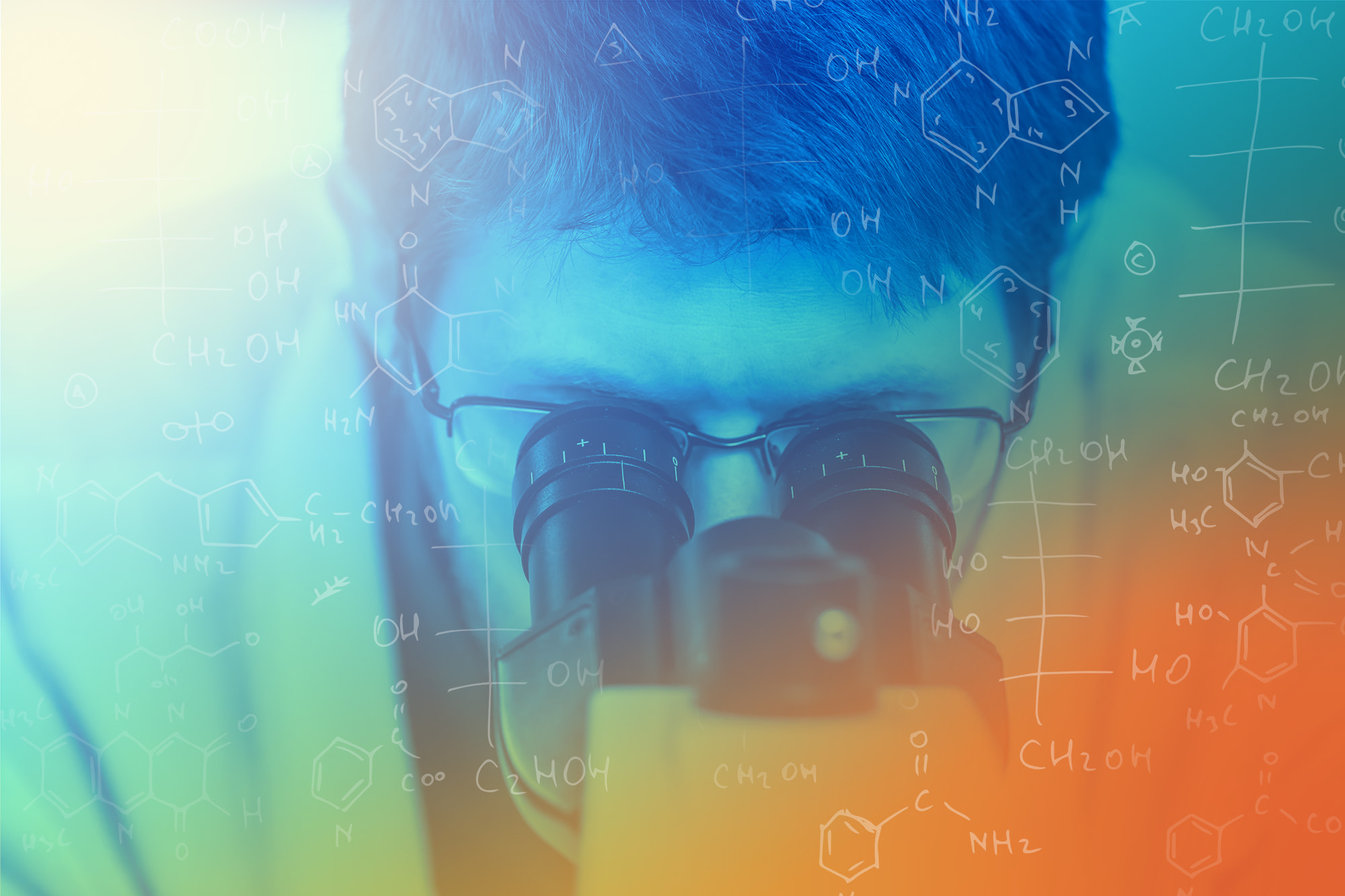A Psychedelic Renaissance
Psychiatric medicine is in the midst of a revolution.
By Ben Seal
Within the next year, the U.S. Food and Drug Administration is expected to approve the use of MDMA-assisted therapy (prescribed doses of the psychoactive drug) to treat post-traumatic stress disorder. This would mark the first time since psychedelic drugs were made illegal by the Controlled Substances Act of 1970 that one could be used for treatment of a psychiatric disorder. Considering that mental illness is estimated to affect one in five Americans, available medicines have limited efficacy for many patients, and the success rate for new psychiatric drug development is notoriously low, the revolution may well be necessary.
The psychedelic renaissance that has brought hallucinogenic drugs back into the mainstream in the past couple of decades — in the form of bestselling books, rising public interest and, most important, a rapidly developing body of scientific research — isn’t likely to stop if MDMA is approved to treat PTSD. Researchers are investigating the promising potential of psychedelics to support the treatment of major depression, anxiety, addiction and other disorders for which current options often prove inadequate.
“People are realizing that these are powerful compounds,” Jason Wallach, PhD ’14, assistant professor of pharmaceutical sciences at Saint Joseph’s University's Philadelphia College of Pharmacy, says. “They are worth studying and they're not just drugs of abuse, which is how they were treated in the past.”
People are realizing that these are powerful compounds. They are worth studying and they're not just drugs of abuse."
Jason Wallach, PhD
Assistant Professor of Pharmaceutical Sciences
But for all the optimism that abounds, unlocking psychedelics’ full potential will require a deeper understanding of how and why they affect the brain in such powerful ways. Wallach is leading the search for answers. His lab is studying how psychedelics function at the molecular level — the receptors they bind to and the pathways they activate in the process — and using that knowledge to develop new compounds that could build on the foundation laid by traditional psychedelics, including MDMA (also known as ecstasy), psilocybin (found in so-called “magic mushrooms”) and LSD (first synthesized by a Swiss chemist in 1938).
Along with collaborators in industry and other research institutions, as well as Saint Joseph’s students, Wallach is helping to answer the most pressing question in the field of psychedelic medicine: “How can we create more effective, safer, more scalable therapeutics?” he asks.
In a paper published in December in the journal Nature Communications, Wallach and his co-authors demonstrated that it’s possible to activate the 5-HT2A receptor — a serotonin receptor in the brain stimulated by psychedelics — without hallucinogenic effects. Given that psychedelic-assisted therapy is a time- and resource-intensive process that puts patients in altered states for hours at a time, the ability to “disentangle psychedelic from therapeutic properties,” as the paper says, would open the door to new and more targeted treatments.
Psychedelics have shown potential as anti-inflammatory agents and in the treatment of cluster headaches, Wallach points out, neither of which seems directly related to the ways the drugs alter sensation, perception and consciousness. By better understanding how psychedelics work on the brain, then, researchers could study the use of these drugs in settings where hallucinations are an unwanted side effect, rather than a necessary part of the path toward healing.
“We can build better compounds that can tune the intensity of the experience or tune the pharmacological effect,” Wallach says.
Wallach says many other labs have been working, like his, to develop drugs that can activate the 5-HT2A receptor without hallucinogenic effects, testing mice for a rapid head-twitch response that indicates the receptor has been stimulated. But nobody understood what allowed certain drugs to activate the receptor without the expected head-twitch response — until now.
“The problem,” Wallach says, “is they had no idea why — and now we’re showing people. We can give you tools to rationally design these compounds, so you don’t have to screen a thousand until you find one.”
With those new tools, the next generation of pharmacologists and medicinal chemists, including the undergraduate and graduate students in Wallach’s lab, could change the future of drug development and therapeutic treatment.

‘A Pioneer in His Field’
Wallach, who is 37, grew up with a rebellious mindset. In elementary school, when he heard stories meant to scare kids away from drugs, he was fascinated. He went to the library to learn more. He retained an interest in psychoactive drugs and enrolled at Indiana University of Pennsylvania with an eye toward a career in the law, where he could work toward the legalization of marijuana, which he felt had unrealized medical potential. (Today, 38 states support marijuana’s medical use.)
He briefly gravitated toward psychology as a way to help people and study how drugs worked, but realized molecular science was the place he could really make a difference. He changed his major to cell and molecular biology and dove into research on cannabinoids, the psychoactive compound in marijuana.
When he came across the work of Alexander Shulgin, PhD, a pioneering pharmacologist who devoted his career to the synthesis of psychedelic drugs, including MDMA, Wallach committed himself to discovering how psychedelics work at the physiological level. If we could understand how psychedelics affect perception, he says, we could better understand how the brain creates our normal conscious experience.
“It’s one of the last frontiers of understanding our reality,” he says.
Wallach attended the Philadelphia College of Pharmacy at University of the Sciences (now Saint Joseph's) for his PhD in pharmacology and toxicology, first working in the lab of Adeboye Adejare PhD, professor in the Department of Pharmaceutical Sciences. Adejare was an important mentor for Wallach, allowing him the freedom to pursue some of his own ideas while demonstrating the value of persistence in scientific research.
Another professor, wary of psychedelics’ status on the scientific fringes at the time, warned him he would be ostracized and struggle to find funding if he pursued his passion. Undaunted, Wallach pushed on.
“I didn't imagine we'd have such rapid progress, but I had a sense things were changing,” Wallach says, “so I didn't take that advice.”
Members of Wallach’s lab work with “no limit, unending excitement about what we’re doing,” says James Gamrat, PhD ’21, a co-author on the Nature paper who spent four years working with Wallach as a postdoctoral researcher and calls him “the smartest person I know.” He believes Wallach’s work will someday result in a new drug, the kind that could help address the mental health crisis.
“There’s just so much untapped potential,” Gamrat says.
Already, Wallach has sought to patent more than 200 compounds developed in his lab, in partnership with Compass Pathways, a psychedelic-focused biotechnology company. Isabelle Mercier, PhD, associate professor and chair of the pharmaceutical sciences department, says Wallach is “a pioneer in this field” whose work is uncovering new pathways for potential treatments and a greater understanding of the central nervous system.
Very few people can say they have the creativity and the ability to design new drugs. You need both."
Isabelle Mercier, PhD
Associate Professor and Chair of the Department of Pharmaceutical Sciences
“He's really creative in the way he approaches problems,” Mercier says. “Very few people can say they have the creativity and the ability to design new drugs. You need both.”

Hope for the Suffering
The modern history of drug development to treat disorders of the central nervous system has been “failure after failure,” Wallach says. Billions of dollars spent, countless hours of research, all with minimal progress toward improving the way we care for mental illness. “Maybe,” Wallach suggests, “we’re framing the questions wrong.”
He’s encouraged by the potential for psychedelics to be part of the answer and doing everything he can to ask the right questions in service of a brighter future.
“I will not be surprised if in the next 10 years psychedelics are a huge part of the market for mental health patients,” Tilka Fannana, a PhD candidate in pharmacology and toxicology in Wallach’s lab and a co-author on the Nature paper, says. “There’s huge hope in these drugs. I’m confident that psychedelics will bring a positive change in the lives of people who are suffering.”
I will not be surprised if in the next 10 years psychedelics are a huge part of the market for mental health patients."
Tilka Fannana
PhD Candidate in Pharmacology and Toxicology
Sarah Herter, BS ’24, a pharmaceutical chemistry major who recently joined Wallach’s lab, says psychedelics have the potential to deliver “better results and better tolerability” than available treatments. Their development has largely been hindered by stigma, she notes, not a lack of efficacy.
Wallach is endlessly curious about the science of psychedelics, but he never loses sight of the purpose of his work. As he devotes himself to helping researchers understand how psychedelics work, he remains focused on getting help to people as fast as he can. On his door, he keeps a reminder, a quote from the medicinal chemist Paul Janssen, founder of Janssen Pharmaceuticals, which he repeats often: “The patients are waiting.”
“I always think about that,” Wallach says. “It motivates me to set up another experiment at the end of the day when I’m tired. This one could be it. Something new could come out of it.”
